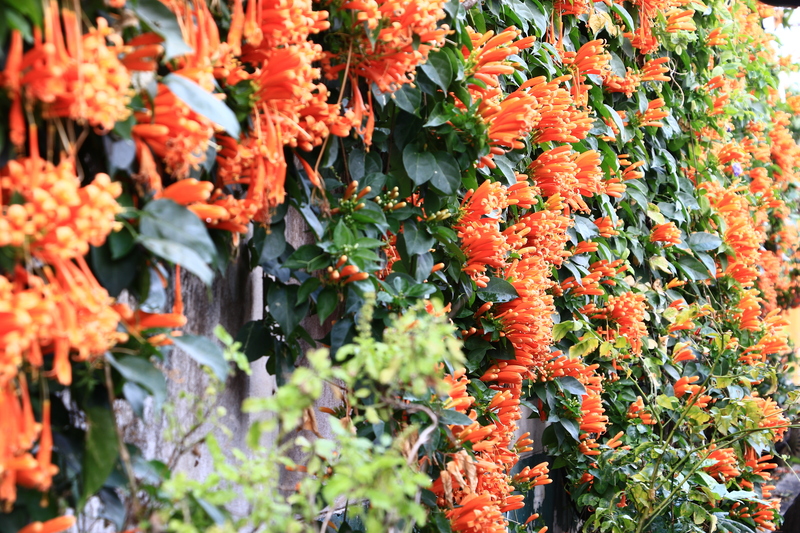Rethinking Climate Solutions: Harnessing the Power of Gardens
Posted on 15/08/2025
Rethinking Climate Solutions: Harnessing the Power of Gardens
Climate change is a complex, daunting challenge that affects every aspect of our lives--from the air we breathe to the food on our plates. As global temperatures rise and extreme weather events become more frequent, innovative and actionable solutions are urgently needed. One overlooked yet highly promising strategy lies just beyond our doorsteps: gardens. This comprehensive guide explores how rethinking climate solutions by harnessing the power of gardens can create a ripple effect toward climate resilience and ecosystem restoration.
Why Gardens Matter in the Fight Against Climate Change
While large-scale renewable energy and industrial shifts often dominate climate discussions, small-scale and local efforts can make a significant impact. Gardens--be it a backyard vegetable patch, community green space, or urban rooftop oasis--offer a unique and accessible pathway to combat the effects of global warming.
The Untapped Climate Benefits of Gardens
- Carbon Sequestration: Plants and healthy soils absorb and store carbon dioxide, a major greenhouse gas, helping to mitigate global emissions.
- Cooling Urban Environments: Green spaces act as natural air conditioners, reducing the urban heat island effect and improving air quality.
- Biodiversity Boost: Gardens serve as microhabitats for pollinators and other wildlife, supporting ecosystem stability.
- Local Food Production: Growing food locally slashes the carbon emissions associated with long-distance transport and packaging of produce.
- Stormwater Management: Healthy garden soils absorb rainwater, reducing runoff, flooding, and pollution in sewage systems.
Harnessing the power of gardens for climate action isn't just an eco-friendly pastime; it's a meaningful, science-backed method to build resilient, healthy communities while fostering global change from the ground up.

The Science Behind Gardens as Climate Solutions
How Gardens Sequester Carbon
Photosynthesis--the process by which plants absorb carbon dioxide and release oxygen--lies at the heart of a garden's climate benefits. Every blade of grass, leaf, and root serves as a miniature carbon pump, extracting CO2 from the atmosphere and storing it in plant tissues and soil. Healthy gardens, especially those utilizing regenerative and organic practices, help improve the carbon storage capacity of soils, playing a vital role in the natural carbon cycle.
Research shows that simply switching to eco-friendly gardening methods--like composting, mulching, and reducing tillage--can multiply a garden's ability to capture and retain carbon. Community gardens and urban green spaces, when implemented city-wide, can create significant "carbon sinks" even in densely populated areas.
Biodiversity and Ecosystem Services
Biodiverse gardens mimic natural ecosystems. By cultivating a broad variety of native plants, gardeners support beneficial insects like bees, butterflies, and other pollinators that are essential for food production and healthy landscapes. Furthermore, biodiverse gardens are more resilient to pests, diseases, and weather extremes--making them important tools for climate adaptation as well as mitigation.
Innovative Ways to Harness the Power of Gardens for Climate Solutions
1. The Rise of Regenerative Gardening
Regenerative gardening goes beyond sustainability--it aims to actively restore degraded soils, landscapes, and communities. This holistic approach combines organic techniques with practices like cover cropping, companion planting, crop rotation, and minimal soil disturbance.
- Soil Health: Focus on soil as a living system, encouraging microbial diversity and natural nutrient cycling.
- Low-impact Gardening: Reduce the use of pesticides and chemical fertilizers to protect soil and water quality.
- Perennial Plants: Incorporate more perennial vegetables, herbs, and fruit trees to provide long-term carbon capture and consistent yields.
2. Urban Gardening and Greening Initiatives
With more than half the world's population living in urban areas, urban gardens offer a critical nexus point between climate action and daily life. Innovations such as:
- Rooftop Gardens: Transforming unused urban rooftops into lush, productive green spaces.
- Vertical Gardens: Fitting plant walls or stacked planters onto buildings to increase green cover and reduce heat absorption.
- Community Food Gardens: Creating shared spaces that not only sequester carbon but also promote food security and community engagement.
These initiatives help cool cities, reduce pollution, and foster a "green culture" that normalizes sustainable behavior throughout urban settings.
3. Water-Smart Garden Design
Climate change is increasing the variability of rainfall and drought cycles. Smart garden design addresses this by:
- Implementing rain gardens and bioswales to manage stormwater naturally.
- Utilizing drought-tolerant and native plants to reduce the need for supplemental irrigation.
- Recycling household greywater for landscape use, maximizing every drop in water-scarce environments.
Water-smart gardening not only conserves a precious resource but also minimizes the risk of fertilizer runoff into rivers and urban water bodies.
4. Edible Landscaping: Food Production Meets Climate Action
Edible landscaping is the practice of integrating food-producing plants into ornamental landscapes. This method:
- Cuts down "food miles" by providing ultra-local produce.
- Reduces packaging and fossil fuel emissions tied to conventional food supply chains.
- Strengthens food security while enhancing garden biodiversity and resilience.
Backyard vegetable patches, fruit tree guilds, and herb spirals are just a few examples of how your landscape can work harder for you and the environment.
Overcoming Barriers: Making Gardens a Central Pillar of Climate Solutions
Common Challenges and How to Address Them
- Space Limitations: Innovative container gardens, window boxes, and vertical gardening solutions make green living possible even in compact apartments.
- Lack of Knowledge: Online resources, local master gardener programs, and urban agriculture workshops provide accessible education for all skill levels.
- Policy and Zoning Restrictions: Advocating for progressive local policies can open up more public and private spaces for gardening initiatives (e.g., allowance for front-yard food gardens or community orchards).
The Power of Community and Collaboration
When individual efforts are combined, the collective impact magnifies. Community gardens, school-based education plots, and neighborhood composting hubs invite participation, foster stewardship, and create shared climate solutions with long-lasting benefits.
Harnessing the power of gardens for climate resilience is a movement that welcomes everyone--regardless of age, skill, or background. By working together, communities build stronger, greener, and more adaptable spaces for generations to come.
Case Studies: Gardens Making a Difference Worldwide
1. Cuba's Urban Agriculture Revolution
Following the collapse of the Soviet Union, Cuba was forced to localize food production. Urban gardens sprang up throughout Havana and other cities, reducing transport emissions, increasing urban shade, and providing a blueprint for sustainable, climate-friendly agriculture in crisis situations.
2. Singapore's City in a Garden
Singapore has prioritized increasing green space and urban gardens as a solution to its hot, humid climate and limited arable land. The city's iconic "Gardens by the Bay" combines technology, biodiversity, and climate resilience, becoming a model for megacities worldwide.
3. The Victory Gardens Legacy
During World War II, "victory gardens" in the US and UK supplied up to 40% of the countries' fresh vegetables. In today's battle against climate change, a resurgence of similar garden efforts could cut emissions, build local resilience, and reinforce food sovereignty.

Practical Steps: How You Can Harness the Power of Gardens for Climate Solutions
Step 1: Start Small but Think Big
- Convert a patch of lawn to native plants or a vegetable bed.
- Choose climate-appropriate, drought-tolerant species to minimize water use.
- Embrace composting to build healthy soil and reduce landfill waste.
Step 2: Go Organic and Regenerative
- Limit or eliminate synthetic fertilizers and pesticides.
- Adopt mulching, cover cropping, and no-dig methods to protect soil structure and biodiversity.
- Rotate crops and practice companion planting to naturally manage pests and improve yields.
Step 3: Maximize Your Garden's Climate Impact
- Plant shade trees to reduce cooling costs and create wildlife corridors.
- Install a rain barrel or greywater system for irrigation.
- Share surplus produce with neighbors or local food banks, reducing food waste and supporting your community.
Step 4: Get Involved and Advocate
- Join or start a community garden.
- Volunteer for school gardening programs or offer to mentor new gardeners.
- Work with local officials to protect green spaces and integrate climate-focused gardening into urban planning.
Conclusion: Gardens as Catalysts for Climate Action
In the face of a changing climate, the garden--whether sprawling or modest--becomes more than just a personal sanctuary. It transforms into a powerful tool for positive environmental change. By adopting climate-smart gardening techniques, advocating for more green spaces, and fostering community participation, we unlock the climate solution potential that gardens inherently possess.
Now is the time to rethink climate solutions. Let us all harness the power of gardens--for our health, our communities, and the planet's future.
Start cultivating change today--one garden at a time.
---Frequently Asked Questions (FAQs) About Gardens and Climate Solutions
-
Q: Can gardens really make a significant impact on carbon emissions?
A: Yes. While a single garden may seem small, widespread adoption of climate-wise gardening can collectively sequester substantial carbon, reduce urban heat, and improve ecosystem health. -
Q: What are the best plants for a climate-friendly garden?
A: Native species, drought-tolerant perennials, and deep-rooted cover crops are excellent choices, as they require less input, enrich soils, and resist pests and diseases. -
Q: How do I start a regenerative garden if I'm new to gardening?
A: Begin by researching local resources, starting small, and focusing on soil health. Add compost, plant a variety of species, and consult with local experts or master gardener networks. -
Q: Are there resources for urban dwellers with limited space?
A: Absolutely. Balcony gardens, container planting, and even indoor vertical gardens allow those with little space to contribute to climate solutions from their homes.
Let your garden become a beacon of hope and a cornerstone in the new era of climate solutions!



